Herkimer Diamonds
Herkimer Diamonds are a unique form of double-terminated quartz crystals found primarily in Herkimer County, New York. Unlike typical quartz crystals that grow attached to a host rock, Herkimer Diamonds form as free-floating crystals within cavities of the host rock, allowing them to develop their distinct double-terminated ends. These crystals are renowned for their exceptional clarity and natural faceting, often possessing 18 faces, which is rare among quartz crystals.
 Herkimer Diamond: Discover Its Meaning, Uses & Benefits (International Crystal Industry Alliance)
Herkimer Diamond: Discover Its Meaning, Uses & Benefits (International Crystal Industry Alliance)
Why They Are Called “Diamonds”
Despite being quartz crystals, they are dubbed “diamonds” because of their remarkable clarity and naturally occurring faceting that resemble true diamonds. The term “diamond” in their name highlights their brilliance and gem-like appearance, though they are chemically and structurally different from real diamonds, which are composed of carbon.
Contents
- Importance and Popularity in Geology and Jewelry
- History and Origin of Herkimer Diamonds
- Discovery and Historical Significance
- Geological Formation
- Geological Characteristics of Herkimer Diamonds
- Physical Properties
- Chemical Composition
- Comparison with Other Types of Quartz
- Locations of Herkimer Diamonds
- Primary Source
- Other Notable Locations Worldwide
- Collecting and Mining Herkimer Diamonds
- How to Identify Herkimer Diamonds
- Tips for Collecting
- Uses and Applications of Herkimer Diamonds
Importance and Popularity in Geology and Jewelry
Herkimer Diamonds hold significant importance in both geology and jewelry for several reasons:
- Geological Significance: Geologists value Herkimer Diamonds for their unique formation process and the insights they provide into the geological history of the region. The crystals often contain fluid inclusions, which are tiny pockets of ancient liquid that can offer clues about the environmental conditions during the crystal’s formation.
- Jewelry Popularity: In the world of jewelry, Herkimer Diamonds are prized for their natural beauty and unique aesthetics. Their exceptional clarity and natural double-termination make them a sought-after choice for collectors and jewelry designers. Unlike many gemstones that require significant cutting and polishing to enhance their appearance, Herkimer Diamonds often need minimal intervention, retaining their natural allure.
Herkimer Diamonds’ combination of geological interest and striking visual appeal ensures their continued popularity and fascination among both scientists and jewelry enthusiasts.
History and Origin of Herkimer Diamonds
 Herkimer Diamond – Mardani Fine Minerals – Touch of Modern
Herkimer Diamond – Mardani Fine Minerals – Touch of Modern
Discovery and Historical Significance
Herkimer Diamonds were first discovered by settlers in the late 18th century in Herkimer County, New York. These crystals were initially found in stream beds and plowed fields, leading to increased curiosity and exploration in the region. The term “Herkimer Diamonds” emerged from their county of discovery, and the name quickly became synonymous with these exceptional quartz crystals.
Their historical significance is twofold: they provided early settlers with a source of wonder and a potential economic resource, and they continue to be a focal point for geological and mineralogical studies. The unique properties and natural beauty of Herkimer Diamonds have made them an important part of local heritage, contributing to the tourism industry in New York and promoting interest in geology and mineral collecting.
Geological Formation
Age and Location
Herkimer Diamonds are predominantly found in the dolostone of the Cambrian-age Little Falls Formation in Herkimer County, New York. The rocks in which they are found are estimated to be around 500 million years old. While Herkimer County is the most famous source, these crystals can also be found in other parts of New York and in certain locations worldwide, such as Afghanistan, Norway, and China.
Formation Process
The formation of Herkimer Diamonds is a complex process that involves several geological factors:
- Host Rock Formation: The process begins with the deposition of carbonate sediments in a shallow marine environment, which eventually lithify into dolostone.
- Cavity Formation: Over time, tectonic activity and natural processes create cavities and vugs within the dolostone. These cavities become the growth chambers for the crystals.
- Silica-Rich Fluid Infiltration: Silica-rich hydrothermal fluids permeate these cavities. The origin of these fluids is a subject of study, but they likely derive from deep within the Earth’s crust.
- Crystal Growth: The quartz crystals grow within the cavities as the silica-rich fluids cool and precipitate quartz. The absence of attachment points within the cavities allows the crystals to develop their characteristic double terminations.
- Inclusions and Clarity: The fluid inclusions within the crystals can provide vital information about the temperature and pressure conditions during their formation. The exceptional clarity of many Herkimer Diamonds is due to the slow and steady growth process, minimizing impurities and defects.
The unique geological conditions of the Little Falls Formation, combined with the precise conditions of the hydrothermal fluid flow, contribute to the formation of these extraordinary quartz crystals. The combination of age, location, and specific formation process makes Herkimer Diamonds a fascinating subject for both geologists and gem enthusiasts.
Geological Characteristics of Herkimer Diamonds
 Herkimer Diamond – HubPages
Herkimer Diamond – HubPages
Physical Properties
Crystal Structure
Herkimer Diamonds are a variety of quartz known for their unique double-terminated crystal structure. This means that the crystals have pointed ends at both ends, which is a rare characteristic. Their crystal system is hexagonal, specifically in the form of a trigonal crystal class. The crystals typically exhibit a prismatic shape with a hexagonal cross-section and are often found with natural faceting, displaying up to 18 faces, which enhances their brilliance and clarity.
Hardness
On the Mohs scale of mineral hardness, Herkimer Diamonds rank at 7. This is the same hardness as other quartz varieties, making them relatively durable and resistant to scratching. Their hardness makes them suitable for use in jewelry, where they can withstand everyday wear.
Clarity and Natural Facets
One of the standout features of Herkimer Diamonds is their exceptional clarity. Many specimens are highly transparent, with minimal internal flaws, which contributes to their gem-like appearance. Their natural facets are a result of their unique growth environment. Unlike many quartz crystals that require cutting and polishing to achieve a sparkling appearance, Herkimer Diamonds often have a naturally faceted look due to the way they form within cavities in the host rock.
Chemical Composition
Herkimer Diamonds are composed primarily of silicon dioxide (SiO₂), the same basic chemical composition as other quartz varieties. However, their purity and clarity can vary slightly depending on the presence of trace elements or inclusions. Their chemical composition contributes to their hardness and optical properties, making them an attractive option for both collectors and jewelry designers.
Comparison with Other Types of Quartz
- Standard Quartz Crystals: Unlike Herkimer Diamonds, most quartz crystals are single-terminated and grow attached to a host rock. They also often require cutting and polishing to enhance their visual appeal. Herkimer Diamonds’ double-terminated structure and natural facets set them apart from standard quartz crystals.
- Amethyst and Citrine: These are colored varieties of quartz. Amethyst contains iron and other trace elements that give it a purple hue, while citrine has a yellow to orange color due to the presence of iron and heat treatment. Herkimer Diamonds, by contrast, are typically colorless or have a very faint color and are valued more for their clarity and natural faceting.
- Smoky Quartz: This variety of quartz has a brown to black color due to radiation-induced color centers. It differs from Herkimer Diamonds in its color and often less transparent nature. Smoky quartz also typically lacks the natural faceting seen in Herkimer Diamonds.
- Rose Quartz: Known for its pink color due to trace amounts of titanium or manganese, rose quartz is opaque compared to the transparent nature of Herkimer Diamonds. The crystal structure of rose quartz also differs, often showing a more uniform surface rather than the natural facets found in Herkimer Diamonds.
Herkimer Diamonds are unique among quartz varieties due to their natural double-termination, clarity, and faceting, making them particularly prized by collectors and gem enthusiasts. Their distinct characteristics set them apart from other quartz forms, each of which has its own set of geological and aesthetic attributes.
Locations of Herkimer Diamonds
 Herkimer Diamond: Discover Its Meaning, Uses & Benefits (International Crystal Industry Alliance)
Herkimer Diamond: Discover Its Meaning, Uses & Benefits (International Crystal Industry Alliance)
Primary Source
Herkimer County, New York
Herkimer County is the most famous and historically significant location for Herkimer Diamonds. The county is renowned for its unique geological formations, particularly the Cambrian-age Little Falls Formation, which hosts these remarkable quartz crystals. The key areas within Herkimer County where these diamonds are commonly found include:
- Herkimer Village: Known for its proximity to several mining and collecting sites.
- Floyd: A town within Herkimer County that has been a significant area for Herkimer Diamond discovery.
- Mohawk: Nearby areas within the Mohawk River Valley also yield Herkimer Diamonds.
The county has a variety of commercial and recreational mining operations, allowing collectors and enthusiasts to search for Herkimer Diamonds. These mines and quarries offer a range of experiences, from guided tours to DIY digging, making Herkimer County a popular destination for mineral enthusiasts.
Other Notable Locations Worldwide
Although Herkimer County is the primary and most famous source, Herkimer Diamonds or similar double-terminated quartz crystals have also been found in several other locations worldwide:
- Afghanistan: Notable finds of Herkimer-like quartz crystals have been reported in areas of Afghanistan. These crystals are similar in appearance but are less well-known than those from New York.
- Norway: Some double-terminated quartz crystals have been discovered in Norway, particularly in the region around the city of Oslo. These Norwegian crystals share similarities with Herkimer Diamonds but are typically less transparent.
- China: In recent years, quartz crystals resembling Herkimer Diamonds have been found in various locations in China. These are often sourced from the mountainous regions of the country, where geological conditions are conducive to the formation of double-terminated quartz.
- Pakistan: Quartz crystals with double terminations have been located in parts of Pakistan, particularly in the northern regions near the Himalayas. These crystals are sometimes compared to Herkimer Diamonds in terms of their structure and clarity.
These international sources, while not as renowned as Herkimer County, contribute to the global appeal of double-terminated quartz crystals and offer alternative locations for collectors seeking Herkimer-like specimens. Each region provides a unique context for the formation of these fascinating minerals, showcasing the diversity of quartz crystals around the world.
Collecting and Mining Herkimer Diamonds
 Herkimer Diamonds – Spirit Rock Shop
Herkimer Diamonds – Spirit Rock Shop
How to Identify Herkimer Diamonds
Identifying Herkimer Diamonds involves recognizing their distinctive physical characteristics. Here are some key features to look for:
1. Double-Terminated Structure
Herkimer Diamonds are renowned for their double-terminals—crystals with pointed ends at both ends. This unique feature sets them apart from most quartz crystals, which typically have only one terminated end.
2. Hexagonal Crystal Shape
They typically have a hexagonal cross-section and prismatic shape. When examining a Herkimer Diamond, look for its hexagonal outline and the presence of multiple faces.
3. Natural Faceting
One of the most distinctive features is their natural faceting. Unlike other quartz crystals that require cutting and polishing, Herkimer Diamonds often come with naturally occurring facets, giving them a gem-like appearance with multiple faces.
4. Clarity and Transparency
Herkimer Diamonds are known for their exceptional clarity. They are often transparent or nearly so, with minimal inclusions. Look for crystals with high transparency and minimal cloudiness.
5. Distinctive Inclusions
While many Herkimer Diamonds are clear, some may contain tiny inclusions or “water bubbles,” which are small pockets of fluid trapped inside the crystal. These inclusions can add to the crystal’s uniqueness and are often visible under magnification.
6. Shape and Size
Herkimer Diamonds vary in size but are typically small to medium-sized crystals. They often exhibit a distinct prismatic shape with sharp, well-defined edges and clear termination points.
7. Location-Specific Features
If you’re collecting from Herkimer County, New York, you can also look for the typical host rock features. Herkimer Diamonds are found in dolostone cavities, so the presence of these rocks can be a good indicator that you might find Herkimer Diamonds in the area.
Tips for Collecting
- Use Proper Tools: To effectively collect Herkimer Diamonds, use tools such as a geologist’s hammer, chisel, and safety goggles. A small hand lens or magnifying glass can help examine the crystals closely.
- Visit Reputable Sites: Consider visiting commercial mines or collecting sites in Herkimer County that allow visitors. These sites are often well-equipped and provide guidance on how to search for and identify Herkimer Diamonds.
- Look for Vugs and Cavities: Search in areas with visible vugs or cavities in the dolostone. Herkimer Diamonds often form within these spaces, so focusing your efforts on these areas can increase your chances of finding them.
- Check Local Regulations: Be aware of local regulations and guidelines for collecting minerals in specific areas. Some sites may require permits or have restrictions on collecting practices.
Identifying and collecting Herkimer Diamonds can be a rewarding experience, combining geological knowledge with the thrill of discovery. With attention to their unique features and careful searching techniques, collectors can find these beautiful quartz crystals and add them to their collections.
Uses and Applications of Herkimer Diamonds

Jewelry
Herkimer Diamonds are highly valued in the jewelry industry for their natural beauty and brilliance. Their unique characteristics make them suitable for various types of jewelry:
- Rings: Often set in engagement rings and other fine jewelry pieces due to their clarity and sparkling appearance.
- Necklaces and Pendants: Used as centerpieces or accent stones in necklaces and pendants, showcasing their natural facets.
- Earrings: Frequently used in earrings where their clear, faceted nature adds to their appeal.
- Bracelets: Incorporated into bracelets, either as standalone pieces or in combination with other gemstones.
Their natural faceting and high clarity mean they often require minimal processing, retaining much of their original allure.
Collecting and Display
For mineral collectors, Herkimer Diamonds are prized specimens due to their aesthetic appeal and rarity. They are often displayed in:
- Mineral Collections: As part of a collection of notable crystals and minerals, valued for their unique formation and clarity.
- Educational Displays: Used in educational settings to illustrate the concept of double-terminated crystals and the geological processes that create them.
- Decorative Items: Sometimes used in decorative displays, such as crystal clusters or as part of natural art pieces.
Metaphysical and Healing Practices
In metaphysical and crystal healing communities, Herkimer Diamonds are believed to have various properties:
- Amplification: They are thought to amplify the energy of other crystals or intentions, making them popular in meditation and energy work.
- Clarity and Focus: Believed to enhance mental clarity and focus, aiding in problem-solving and personal growth.
- Healing: Used in healing practices for their purported ability to clear blockages and support emotional and physical healing.
Industrial and Scientific Uses
While not as common as some other quartz varieties, Herkimer Diamonds have niche applications in industrial and scientific fields:
- Research: Their clarity and inclusion patterns can provide valuable data in geological and mineralogical research.
- Gem Cutting: Occasionally used in high-precision gem cutting to explore the properties of quartz and its interactions with light.
Crafts and Decorative Arts
Herkimer Diamonds are also utilized in various crafts and decorative arts:
- Artistic Creations: Incorporated into artistic projects, such as sculptures or custom jewelry pieces, where their natural beauty is highlighted.
- Home Décor: Used in home décor items like crystal displays or as part of crystal grids and arrangements.
Their versatility and striking appearance make Herkimer Diamonds suitable for a wide range of applications, from fine jewelry to educational displays and artistic endeavors. Whether valued for their natural beauty, metaphysical properties, or scientific interest, Herkimer Diamonds continue to be appreciated across multiple fields.

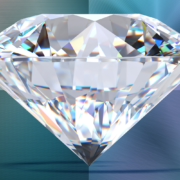
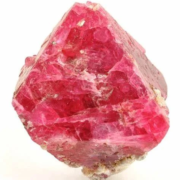
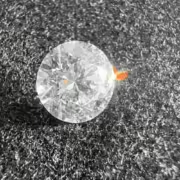
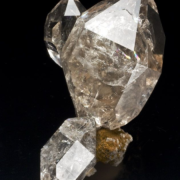
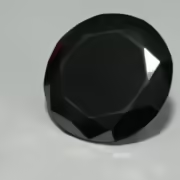


Leave a Reply
Want to join the discussion?Feel free to contribute!